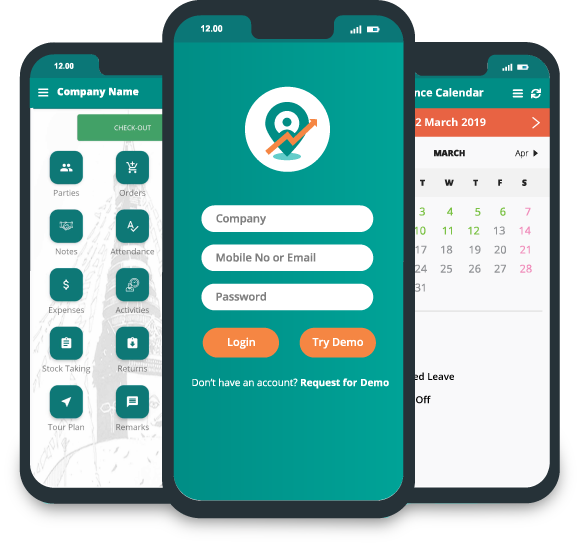Understanding The Customer Journey In Sales
_1717323082.png)
In the competitive world of sales, understanding the customer journey is essential for success. The customer journey encompasses all the interactions a customer has with your brand, from the initial awareness stage to the final purchase and beyond. By mapping out this journey, sales teams can tailor their strategies to meet the needs and expectations of their customers at every touchpoint. This article will delve into the importance of understanding the customer journey and provide practical steps to optimize it for better sales outcomes.
The Importance of Understanding the Customer Journey
The customer journey is more than just a series of transactions; it’s a holistic experience that shapes a customer’s perception of your brand. Understanding this journey is crucial for several reasons:
Enhanced Customer Experience:
By understanding the journey, sales teams can identify pain points and opportunities to improve the customer experience. A seamless and positive journey increases customer satisfaction and loyalty.
Informed Decision Making:
Insight into the customer journey provides valuable data that can inform sales strategies. Knowing where customers drop off or experience friction allows sales teams to make data-driven decisions to optimize processes.
Personalized Sales Approach:
Each customer’s journey is unique. Understanding individual journeys enables sales teams to personalize their approach, offering relevant solutions and building stronger relationships.
Increased Conversion Rates:
By addressing customer needs and concerns at each stage of the journey, sales teams can guide prospects more effectively towards making a purchase, thereby increasing conversion rates.
Mapping Out the Customer Journey
Mapping the customer journey involves identifying and analyzing each touchpoint a customer has with your brand. Here’s how to do it:
Identify Key Stages:
The customer journey typically includes the following stages:
Awareness: The customer becomes aware of a need or problem and begins searching for solutions.
Consideration: The customer evaluates different options and compares products or services.
Decision: The customer decides to purchase a specific product or service.
Purchase: The transaction is completed.
Post-Purchase: The customer’s experience after the purchase, including support and follow-up.
Gather Data:
Collect data from various sources, such as website analytics, customer feedback, and sales records. This data will help you understand how customers move through each stage and where they encounter obstacles.
Create Customer Personas:
Develop detailed personas representing different segments of your customer base. Personas help you understand the needs, motivations, and behaviors of different customer groups.
Identify Touchpoints:
List all the touchpoints where customers interact with your brand. This includes online interactions (e.g., website visits, social media engagement), offline interactions (e.g., in-store visits, phone calls), and post-purchase interactions (e.g., customer service, follow-up emails).
Analyze Pain Points and Opportunities:
Evaluate each touchpoint to identify pain points where customers may experience difficulties. Look for opportunities to enhance the experience, such as streamlining processes or providing additional support.
Develop a Journey Map:
Create a visual representation of the customer journey, highlighting key stages, touchpoints, pain points, and opportunities. This map will serve as a reference for optimizing the customer experience.
Optimizing the Customer Journey
Once you have a clear understanding of the customer journey, you can take steps to optimize it:
Enhance Digital Presence:
Ensure your website and digital channels provide a smooth and engaging experience. This includes easy navigation, informative content, and responsive design.
Personalize Interactions:
Use data to personalize your interactions with customers. Tailor your messaging, recommendations, and offers based on individual preferences and behaviors.
Provide Excellent Support:
Offer prompt and effective support at every stage of the journey. This includes pre-purchase inquiries, post-purchase support, and proactive follow-up to ensure customer satisfaction.
Streamline Processes:
Identify and eliminate any friction points in the customer journey. Simplify processes such as checkout, account setup, and returns to make them as hassle-free as possible.
Leverage Automation:
Use automation tools to enhance the customer experience. Automated email campaigns, chatbots, and CRM systems can help you stay connected with customers and provide timely support.
Continuously Monitor and Improve:
The customer journey is dynamic and evolves over time. Continuously monitor customer feedback and journey analytics to identify areas for improvement and adapt your strategies accordingly.
Conclusion
Understanding and optimizing the customer journey is essential for achieving sales success. By mapping out the journey, identifying key touchpoints, and addressing pain points, sales teams can create a seamless and personalized experience that drives customer satisfaction and loyalty. As the business landscape continues to evolve, staying attuned to the customer journey will help sales teams stay competitive and achieve long-term success.









